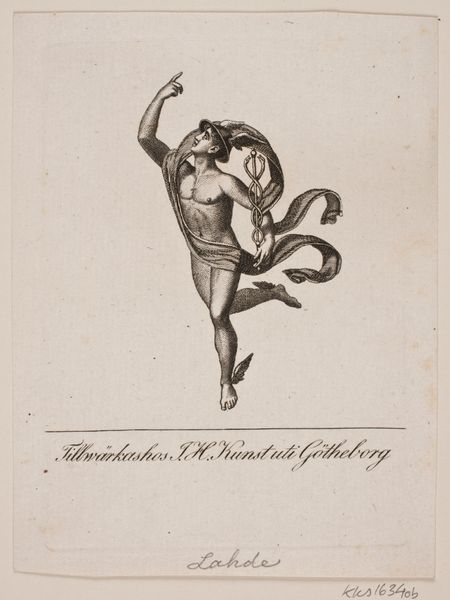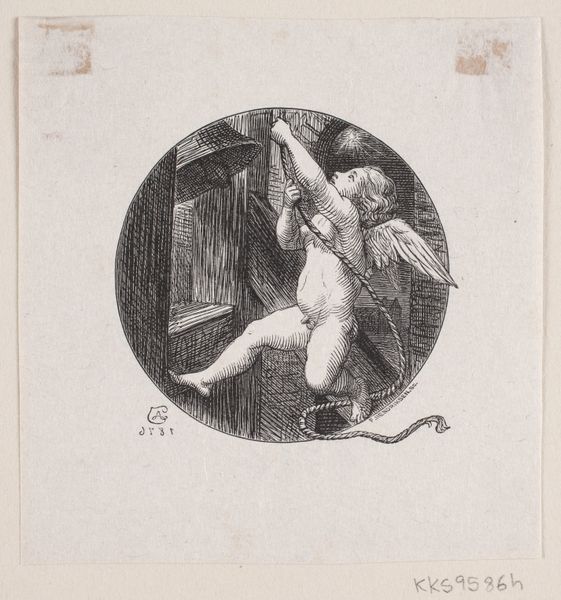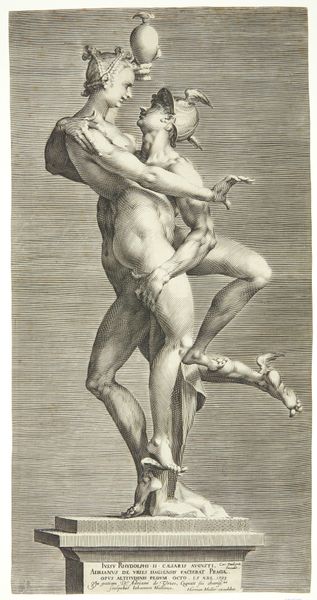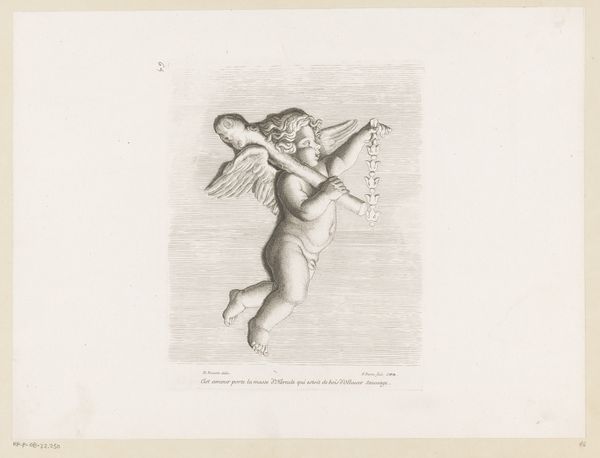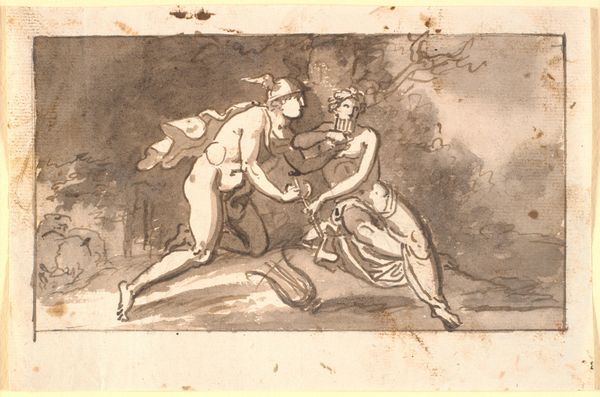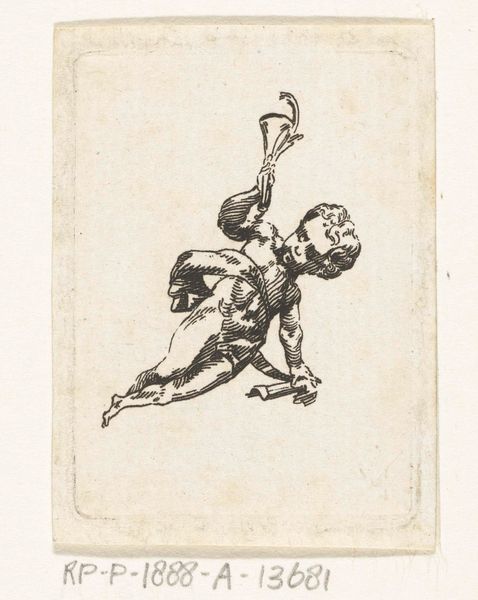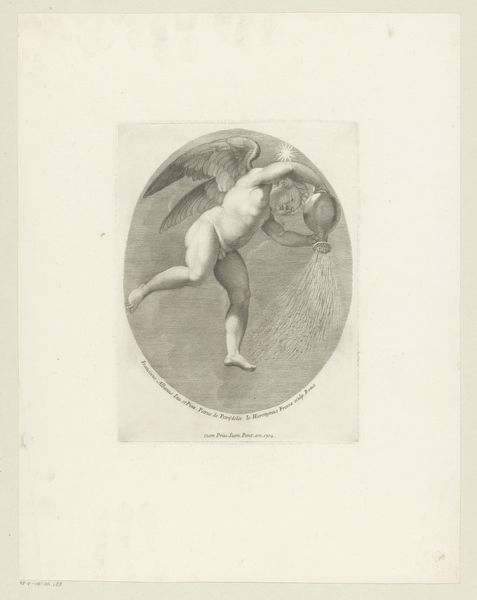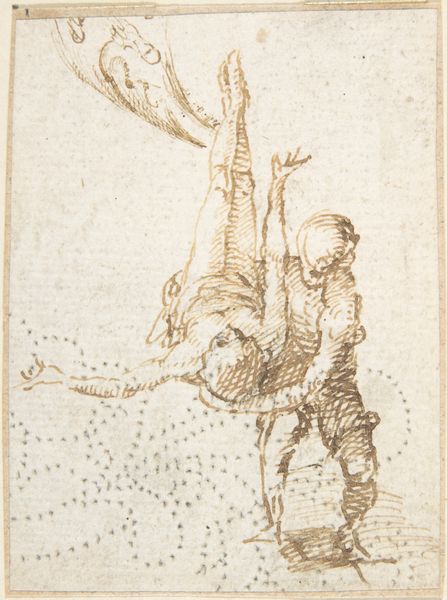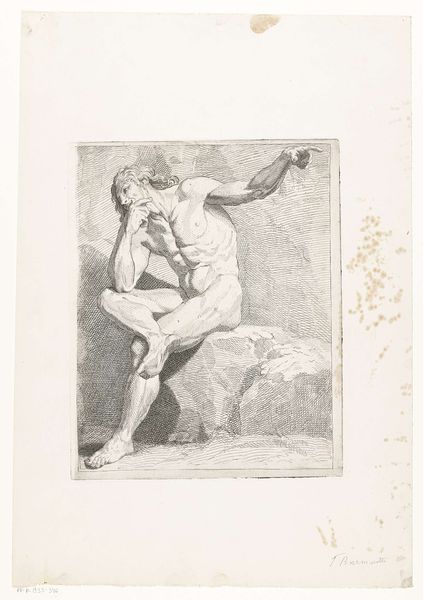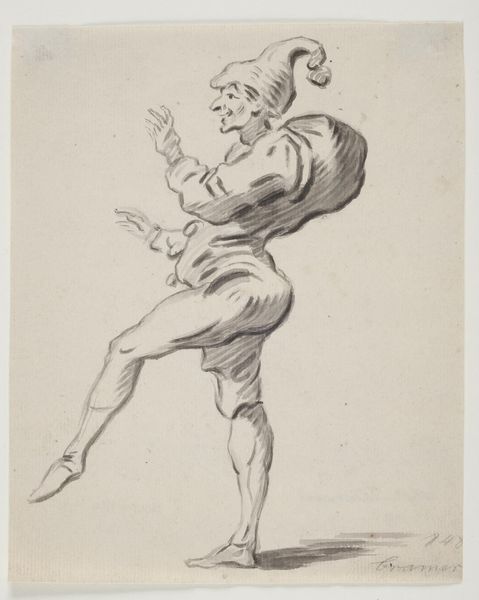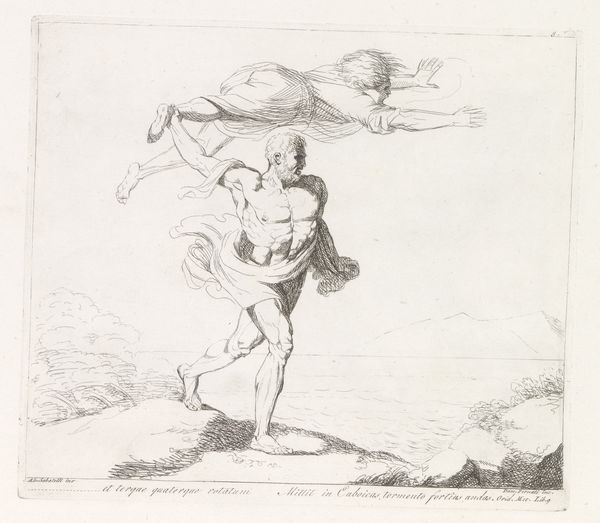
print, etching
#
neoclacissism
# print
#
etching
#
figuration
#
line
Dimensions: 150 mm (height) x 100 mm (width) (plademaal)
Curator: This etching by Gerhard Ludvig Lahde, simply titled "Hermes," likely dates from between 1765 and 1833, placing it firmly within the Neoclassical period. Editor: It feels so weightless, almost ethereal. The line work is incredibly delicate, giving the figure a sense of movement, of taking flight even though it’s just an etching. Curator: The choice to depict Hermes, the Greek messenger god, in this style is interesting when considered within the context of Neoclassicism. This movement drew heavily on classical antiquity, but often selectively. How might a god known for speed and communication function as a symbol in this era? Editor: He holds aloft the caduceus. Look at how Lahde renders the twin snakes. They seem almost playful rather than threatening, intertwining with a harmonious balance that visually echoes the sense of equilibrium prized at the time. Could the artist have intended Hermes to represent healing, negotiation, or commerce? It would be interesting to note to whom such works were being targeted; a commentary, perhaps on rising merchant influence. Curator: Or maybe something as simple as his role as psychopomp, guiding souls to the afterlife. During a time with limited rights and social stratification, he might be regarded as the impartial judge. Lahde, while undeniably talented in draftsmanship, presents Hermes as this stoic and balanced figure that’s accessible. He looks away from us, as if to dismiss any interpretation of the scene, only forwarding the story from antiquity to the world, or afterlife. Editor: That resonates. And even his wings, mere suggestions on his sandals and cap, subtly hint at unseen realms and facilitate dialogue across the centuries about timeless narratives of mortality and communication. Curator: So, it seems while an object on display, this "Hermes" creates as many questions as it may provide answers; fitting indeed, that he's a harbinger of mystery. Editor: Absolutely; Lahde invites the observer to their own reflections.
Comments
No comments
Be the first to comment and join the conversation on the ultimate creative platform.
